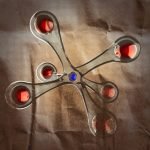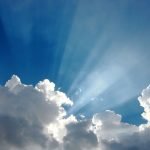Nature Cure Clinical Pearls: To Fear or to Trust the Fever?
Sussanna C. Czeranko, ND, BBE
The process [fever] should never be disturbed and suppressed by force but must be assisted and directed.
-Ludwig Staden, 1902, p. 69If the morbid matter does not come out in some acute form, it lays the foundation for chronic ailments.
-William F. Havard, 1918a, p. 419Those who fail to realize that all acute conditions are natural healing efforts of nature, and are necessary in order to promote the destruction, oxidation and elimination of morbid matter from the body, will continue to look for remedies and measures to counteract these natural reactions.
-William F. Havard, 1918b, p. 813
To grasp, but also to savor, the significance of the fever leads us right at the very core of what the early NDs believed about their healing paradigm. Nothing is more quintessentially naturopathic care than the management of the common fever. The fever was the naturopathic torch song, which separated them from the allopath’s persistent, often expedient reliance on drugs and surgery. The naturopathic understanding of the fever went in hand with their deep respect for nature. The literature of the period illustrates repeatedly how the fever was embraced and utilized successfully in the treatment of many maladies. For these NDs, the fever was a friend and nature’s way of housecleaning the body of accumulated morbid matter and ongoing, poor lifestyle choices.
Why was the fever so important and discussed so frequently by the early NDs? The fever helped shape the therapeutic order and to reinforce the very personal character of naturopathic principles. For example, Lindlahr, who embraced nature fundamentally, understood the power of the fever in restoring health. Lindlahr stated: “All acute diseases are uniform in their causes, their purpose and if conditions are favorable, uniform also in their progressive development” (1922, p. 77). Lindlahr hinted too that to understand the fever one could harness its potential for healing. Havard, in the same vein, demystified the dreaded fever and acute disease:
Disease is a state in which the body has either taken in more than it can use and has accumulated more waste than it can eliminate, or it has been deprived of the elements necessary to repair the waste of cellular activity and support the life processes. (1921b, p. 169)
These were the conditions that were responsible for the chemical changes in the body that produced an increase in body temperature (the fever) accompanying acute disease.
The early naturopathic view was not the accepted medical paradigm. This is a very critical point because the fever lay at the juncture where NDs separated from the MDs. The fever found in acute diseases was, in fact, a good sign according to NDs and not something to be invariably battled.
Morbid Matter Excess
One of the earliest commentaries in the naturopathic literature on the “beneficence of the fever” was made by Ludwig Staden. In one sentence, he summarized the essence of naturopathic thought on the fever. He stated: “A characteristic symptom of acute disease is the fever; it is a process of combustion of accumulated morbid matter in the entire system which has transformed in fermentation; it is therefore a self-healing and self-purifying process of Nature” (Staden, 1902, p. 69). There were many others who shared this perspective, including Wigelsworth, who also saw the fever and acute disease as self-preserving and as “eliminating crises, or attempts at elimination and neutralization” (1918, p. 732).
Havard identified “three cardinal features or symptoms in all acute diseases: increased temperature, increased heart rate or pulse and increased respiration” (1921b, p. 169). Hoegen expanded these symptoms to include “excitability, heat, rapid pulse, disturbance of the nervous system, and also digestion, coated tongue, increased temperature, sometimes as high as 105°F [40.6°C], pulse beating 80-120 per minute, increased respiration and a changeable feeling of cold and heat” (1916, p. 411). Hoegen continued with his long list of symptoms: “extreme thirst, loss of appetite, dry skin, headache, dark-colored urine, having much sediment, general weakness and debility, delirium and restlessness” (1916, p. 411).
Despite the nature of many of the symptoms of a fever that can cause alarm, Havard pointed out that we often forget that “acute diseases run a definite course and are self-limiting” (1918b, p. 813). From this perspective, the early NDs frequently recommended leaving a fever alone and supporting the body’s vitality as the best course of action. The consensus among the early NDs, then, constituted a unified stance that the fever was the expression of self-healing, that it was positive, and that it was a natural process to return to homeostasis. Benedict Lust frequently reiterated that it was not the treatment that was ultimately responsible for cure, but instead the enabling of an increase where possible of “the vital strength of the body in order to make it capable of discharging the disease. This is the leading principle of Naturopathy” (1904a, p. 60). Havard agreed with Lust, reminding his readers that “Naturopathy takes no credit for the recovery of any patient from an acute disease, because recovery is the natural outcome” (1918b, p. 813). For the early NDs, the fever was not necessarily a disease but “an effort to rid the organism of a disease, and to restore a normal condition” (Hoegen, 1916, p. 411).
Seeing that the fever itself was not a disease did not imply, though, that the NDs chose to do nothing. Instead, “it does mean that a doctor should be in attendance who will help Nature to make the best of her violent efforts to clean the system and thus to make health” (Wigelsworth, 1918, p. 732). The friendly fever was a means of “regeneration within the body, i.e. the dissolution, and excretion of foreign matter and the formation of new and pure blood and tissues cannot take place without ‘fever,’ inflammation, etc” (Luepke, 1916, p. 275).
Do Not Interfere
Therapeutic interventions in fever management were often confused with the body’s innate healing response as responsible for the cure. Havard affirmed: “The patient will recover in 99 cases out of every 100 without the application of any therapeutic devices” (1921b, p. 168). Havard did not advocate the use of natural remedies for acute diseases and especially to counter the efforts of nature. He asserted: “In acute conditions, remedies are unnecessary, and if given with the idea of checking any of the symptoms, they often result in counteracting and suppressing nature’s healing efforts” (Havard, 1918b, p. 813). Interfering with the natural progression of the fever often had negative outcomes. Havard felt that no one should die from an acute disease, especially “if nature’s operations are not interfered with” (1918b, p. 813). He continued: “It does not require any great amount of scientific knowledge to treat a patient who is down with pneumonia, typhoid fever, or any one of the myriad of acute conditions” (Havard, 1918b, p. 813). Havard took the position that physicians who lose a patient during a fever are incompetent physicians (1918b, p. 813).
By embracing the fever as a natural consequence when the laws of nature were broken, the early NDs demonstrated that they had no doubts of its force. Rather than suppress the heat of the fever, the NDs advocated the contrary. Staden guided: “It stands to reason that such a process [the fever] should never be disturbed and suppressed by force, but must be assisted and directed” (1902, p. 69). The ability to produce a fever was “an index of the reactive power of the body” (Havard, 1921b, p. 170). Havard continued: “It is almost impossible for a person of low vitality to have an acute disease” (1921b, p. 170).
In the treatment of the fever, cultivating and supporting the patient’s vitality was essential. When we talk about vital force, the vis medicatrix naturae, we are confronted with the topic of morbid matter whether we want to or not. The naturopathic treatment objectives during a fever were to “assist in the elimination of morbid matter from the body, but at the same time [to] stimulate the vital powers of Nature” (Luepke, 1916, p. 275). Morbid matter was to the early NDs as real as the germs were to the MDs. One might observe that each group held a position at the opposite end of a continuum in which germs and morbid matter were considered similar, but quite differently painted and perceived depending on the observer. Germs acquired scientific names: serums, vaccines, vectors, and microscopic verification. The tangibility of germs propagated a highly efficient medical public education machine that invariably spread fear where germs existed. At the other end of that spectrum, morbid matter was seen as an obscure abstruse concept that did not gather within the language and discourse of advancing scientific vigor acceptable to the dominant medical paradigm and its proponents.
Nevertheless, for the NDs, morbid matter was a result of bad lifestyle habits, poor ventilation, unhealthy food, overwork, etc. Morbid matter occurred in a person if he or she did not exercise responsibility or good judgment. At the risk of seeming cheeky, may I suggest that the point of departure, the rift, the struggle, the opposition between naturopathy and allopathic medicine rested on these two words: morbid matter. Germs were tangible, mechanistically reduced, defined, and categorized, whereas the notion of morbid matter was more ephemerally and metaphorically understood, even though many early NDs spoke with conviction and in detail about lowered vitality and abnormal retention of systemic toxins in the body. Lindlahr, for example, explained that:
accumulation of waste and morbid matter in blood and tissues creates the great majority of all diseases arising within the human organism. More harmful and dangerous, and more difficult to eliminate than the different kinds of systemic poisons, that is, those which have originated within the body, are the drug poisons, especially when they are administered in the inorganic mineral form. . . . Nothing so interferes with the inflow of the life force, with free and normal circulation of blood and lymph and with the oxygenation and combustion of food materials and systemic waste as the accumulation of morbid matter and poisons in the tissues of the body. (1922, p. 172)
In the minds of the early NDs, the fever was as connected to morbid matter as it was to the fears associated with the germ theory.
Suppression Sows Chronicity
The early naturopathic and the early allopathic reactions to a fever could not have been more polarized. The opposition of the NDs to the suppressive treatments of the MDs filled volumes in the early naturopathic journals. They were horrified by an accumulating propaganda that anchored drug treatments in the public mind as the only viable treatment. As Havard declared at the time, “So deeply have [the allopaths] sown the seed of a false doctrine in the minds of the people, that it is difficult for us to convince even the most intelligent persons that an acute disease is a natural reaction” (1921b, p. 168). The outrage by Havard and his colleagues against drugs was justified in that the naturopathic perspective was that these toxic compounds impaired circulation and caused congestion to vital organs. Havard contended:
Retention of toxins, due to interference in the eliminating organs, is a far more responsible cause [of a great number of complications]. Meddlesome treatment of acute diseases establishes the [congestion and toxicity] bringing on death in many cases that would have terminated in recovery if left alone. (1921b, p. 170)
Friend or Foe?
The understanding of the causes of disease differed sharply between the NDs, who believed that disease occurred when the laws of nature were transgressed, compared with the MDs, who “adopted the theory that all acute diseases are caused by an infecting organism” (Havard, 1921a, p. 226). Not unlike the “physicians” of earlier eras who resorted to bleeding and heroic drugs such as mercurous chloride (calomel), the MDs of the earlier 20th century (and continuing to this day) exterminated anything foreign or suppressed any signs of symptoms. The MDs “seemed to take fever as a great demon that has pounced down on some unlucky individual and with all of the knowledge that they possess will stop it as quickly as possible” (Harvey, 1915, p. 434). Havard stated: “At present, [allopathy] concerns itself only with the counteraction of symptoms and the suppression of nature’s curative efforts” (1918a, p. 420). Staden wrote:
Naturopathy on the contrary perceiving that the fever is man’s greatest friend, simply recognizes that every particle of its cause must be dissolved and excreted from the body, which cannot be accomplished but by permitting Nature to do its work without restraint, and Nature always will do this work completely and free of danger to life, if assisted and controlled by natural means. (1902, pp. 69-70)
The fever as an act of nature was supported by another ND, M. G. Young, who stated: “Nature is never in error; she never makes mistakes, and this fever is simply her effort” (1916, p. 400) to reestablish balance. The use of poisonous drugs to quash fevers “only hinders the work of nature and makes her task harder by the subduing of her strength with poison drugs” (Young, 1916, p. 400). The MDs suppressed all signs as quickly as possible, resorting to medications or even ice water baths to suppress fever, while the NDs used the fever to dissolve and eliminate morbid matter (Luepke, 1916, p. 275). Those same NDs contended that allopathic medicines only had “a harmful effect on the body because they lessen[ed] or weaken[ed] the vital strength” (B. Lust, 1904a, p. 60). As well, Havard pointed out: “The medical treatment of acute disease is erroneous, and fails in a large percentage of cases because the treatment interferes with the body’s efforts to rid itself of its encumberance [sic]” (1921c, p. 288).
From the naturopathic perspective, not following the cues from nature complicated acute diseases, resulting in prolongation or suppression that led to the creation of a new disease picture. To interfere with nature’s effort would bring harm, and NDs like Havard chastised his colleagues who adopted similar tactics as the “regulars”:
Drugless physicians who look upon an acute reaction as a process that is detrimental to the patient, and who apply their methods of treatment to combat symptoms and terminate the process before it has accomplished its purpose are not any more intelligent than the drug physician. (1921b, p. 170)
The disappearance of symptoms after medications and heroic measures did not mean that the disease has left the body. Rather, Benedict Lust explained that it “has only been suppressed for the time being, and that the first opportunity it will probably reassert itself in another form” (1904a, p. 60). Havard expressed concern that the use of vaccinations, serums, and medications to eradicate disease would only “change the form in which the disease will manifest” (1918a, p. 420). He added: “Serums do not prevent disease; they merely cover them up” (Havard, 1918a, p. 419). The NDs rationalized that suppression by medications only led to chronic disease. While the fever and acute diseases were heralded as “safety measures . . . [and] periodic cleansing processes which enable the body to throw out all unnecessary material” (Havard, 1921c, p. 288), the NDs could understand clearly why using suppressive pharmaceutical measures would lead to long sequelae of problems.
Notwithstanding the debate about morbid matter and germs, Staden saw three contributing factors to chronic disease. He elucidated:
Chronic diseases are . . . the result of acute diseases suppressed by medicines, or of acute diseases which have not become properly developed in consequence of too much accumulation of morbid matter and therefore very low vitality, or they are the consequence of vaccination. (Staden, 1902, p. 70)
Benedict Lust had enumerated the same causes stated by Staden and added wrongful living as a contributing factor to chronic disease (1904a, p. 61).
Contributing to this discussion about the causes of acute and chronic disease, Lindlahr’s views would become the doctrine of the future naturopathic profession. Lindlahr listed three causes for disease: lowered vitality, abnormal composition of blood and lymph, and the accumulation of morbid matter and poisons (1922, pp. 36-43). Lindlahr defined acute disease succinctly: “Every so-called acute disease is the result of a cleansing and healing effort of Nature” (1922, p. 19). The resounding message from the NDs was to trust nature and concomitantly to trust your body’s efforts to heal.
Weighing in, Thirion’s definition is also helpful here. He wrote: “Chronic disease is the inability of the organism to react by acute efforts or healing crisis ‘against constitutional disease conditions’” (Thirion, 1918, p. 275). Havard, though, phrased it this way: “Disease becomes chronic when the vitality reaches such a low ebb that the body has not the power of reaction. Reaction requires vitality plus—vitality to maintain physiological activity and surplus vitality to produce the reaction” (1919, p. 113). Commenting on the broader implications of these conflicting views about the fever, Dr Harless, director of the University Clinic at Bonn, Germany, declared: “If I knew how to produce a Fever, I would be able to cure all diseases” (Luepke, 1916, p. 276). This is exactly what the early NDs knew how to do in the treatment of dangerous infectious diseases to the common cold. To know how to treat the fever was the basis of naturopathic successful patient care.
Once chronic disease set in, the NDs knew that treatment could be a long, arduous process. However, the ND practiced patience and determination. Steps were taken to encourage fevers to resolve chronic pathology. Wigelsworth explained: “Chronic disease must be treated to bring it to an active eliminating stage or it can never be cured” (1918, p. 732). The cure was assured once acute symptoms such as a fever would manifest during the treatment of chronic diseases. Havard also shared Wigelsworth’s views: “Chronic diseases are not curable, as the process must return to its acute stage before the disease can be eradicated” (Havard, 1918b, p. 813).
The NDs also established clear guidelines in dietetics in the treatment of fever. We are familiar with the saying “starve the fever.” Overtaxing the digestive organs with solid food was discouraged. As Luepke explained, “To offer solid food in serious fevers, practically means to place foreign bodies in the alimentary canal which merely ferment and putrify [sic], causing discomfort with flatus, fetor and diarrhea” (1916, p. 274). Thus, along with abstaining from eating during a fever, the NDs urged that “plenty of water should be drunk at intervals, so as to stimulate the kidneys activity to eliminate poisons from the body” (B. Lust, 1928, p. 43). Havard added his counsel: “Another great mistake which is made, not alone by the medical profession, but by drugless physicians as well, is to persist in feeding the fever patient. Of all things this is possibly the most dangerous” (1921c, p. 288).
In this connection, other NDs such as Dr Hunter, who had attended to patients for over 50 years, suggested approaches that respected the process of the fever by using hydrotherapies to get effect in such cases:
In every case of feverishness, the best means to give relief is a warm wash before going to bed, and then to bind a bandage of a common towel, having from 6 to 10 inches wide of the one half lengthwise dipped into cold or tepid water, and, after wringing it, fold the wet half to the dry half, and bind it all around the body, from close under the arms, with two folds of dry flannel above, fastened with two or three pins all night. (1900, p. 169)
His colleague, Dr Staden, recommended the following:
[T]he sheet packs work like a big porous plaster, drawing out (through the millions of pores of the skin) a great deal of impurities and morbid matter; therefore in cases of small-pox, scarlet fever, measles, etc., the eruptions on the body are the result of the purifying process and diminish the danger of life with every hour. (1902, p. 70)Louise Lust herself, adding to the literature about working with the fever, gives the following instructions on how to administer a wet sheet pack. The wet sheet pack treatment is set up before the patient disrobes. On a bed or examining table, a protective sheet is placed first to protect the bed from becoming wet. Next two to three wool blankets are laid down with a bedsheet. Another sheet is taken and soaked in cool water of about 55° to 60°F (12.8° to 15.5°C) and wrung out as much as possible (Staden, 1902, p. 70). This is laid on top of the blankets and dry sheet. Louise Lust advised: “Place the sheet smoothly upon the blanket” (1911, p. 231). She continued: “The patient, disrobed, is assisted to the middle of the wet sheet, the arms resting at the side of the body. The sheet is then wrapped smoothly and rapidly around the body and closely around the neck” (L. Lust, 1911, p. 231). Louise Lust continued describing the quick movements needed to wrap each of the blankets, “taking great pains to tuck them well about the neck and feet in particular” (1911, p. 231). One important rule in administering a pack to fever patients, she reminded her colleagues, was to ensure that the feet were warm: “If not, they should be rubbed with warm hands, or hot water bottles may be applied” (Hoegen, 1916, p. 411) and placed inside the pack.
To lower high temperatures in such cases, Benedict Lust recommended that his colleagues should include the following procedure:
One, two or three layers of wet linens may be wrapped around the body, only loosely, covered by flannel, woolen or linen [covering] in order to protect the bed from becoming wet. . . . The packs must be removed as soon as they become hot or dry. (1910, p. 86)
The duration of the wet sheet pack for a fever was about an hour. Louise Lust counseled: “If the patient goes to sleep, do not disturb him” (1911, p. 231). In any case, in those days cold baths or any other cold-water applications were used with care. In fact, Benedict Lust advised: “Never under any circumstances, use ice bags or ice water, but only water of natural temperature as it comes from [the tap]” (1910, p. 85). Benedict Lust continued: “Never, by means of cold baths, ablutions, sponges, wet packs, etc.,” insisting to “suppress the fever temperature but merely lower it below the danger point. For instance, if the fever has a tendency to rise to 104°F [40°C] or more, we never lower it below 101° [38.3°C] or 102°F [38.9°]” (1910, p. 85). Benedict Lust illustrated how to lower the fever:
When the fever rises above 102° [38.9°C] the [patient] should be placed in a warm bath about 100°F [37.8°C], the temperature of which may be gradually reduced, or [the patient] is kept in for 20 minutes with gentle friction of the body, by which time the water is sufficiently cooled. (1904b, p. 182)
And, among many pearls in the literature, there is the reminder by Buettgenbach that a feverish patient needs to be protected from simple colds, which can compound his or her discomfort. He wrote: “Half an ounce of prevention is better than a pound of cure for the danger of ‘catching a cold’ is avoided” (Buettgenbach, 1900, p. 99).
Havard introduced to his naturopathic colleagues the spring fast as a way of cleansing and eliminating the winter’s accumulation of waste and morbid matter as a preventive measure against acute diseases. He emphasized that NDs should “fast two days each week for six weeks, with a light diet on other days consisting mainly of raw foods, with the exception of, say, Sunday, when they may indulge in a good cooked meal” (Havard, 1919, p. 115). He continued: “Take daily exercise to produce perspiration, a cold shower or sponge bath in the morning and a strenuous towel rub at night” (Havard, 1919, p. 115). Following this spring cleanse, activities would spare the person the spring cold or even the need for spring tonics.
Conclusion
The NDs were not afraid of the fever. They knew that to assist and monitor the fever, they could achieve healthy outcomes for their patients. Staden reassured: “Nature’s work is slow but sure; it is an immense mistake to force Nature by artificial means, and so thousands of operations are needless” (1902, p. 71). Others such as Havard also shared Staden’s call for patience: “Acute conditions, allowed to run their course, with the patient receiving proper care, will never result in chronic disease” (Havard, 1918b, p. 814). Havard counseled his colleagues to trust in the process and to trust the fever. He cautioned: “Any physician who does not recognize the superior hand of Nature in the acute reaction is likely to make the mistake of interfering with a natural process that in itself constitutes a cure” (Havard, 1921b, p. 170). The final word goes to our dear colleague Louis Kuhne:
All the various forms of disease are, as we have seen, only efforts of the body to recover health. They must not, therefore, be suppressed and rendered latent, as the orthodox medical school teaches but the body must be assisted to affect these curative crises as quickly as possible, in the least dangerous manner. Only in this way can the body really recover. Disease if repressed or rendered latent, leads slowly but surely to severe and wholly incurable conditions of health. For the morbid matter in such a case, does not remain inactive in the body, but is subjected to continual changes and transformations. (1917, p. 337)
 Sussanna Czeranko ND, BBE is a naturopathic physician licensed in Ontario and in Oregon, practicing since 1994. She incorporates “nature-cure” approaches systematically into primary care by including Balneotherapy, Breathing therapy and Nutrition. As the Rare Books Curator at NCNM, Dr Czeranko is currently compiling an eleven volume series titled, In Their Own Words, based upon the Benedict Lust journals published early in the last century. As the founder of the Breathing Academy, a training institute for naturopaths, she facilitates the incorporation of the scientific model of breathing therapy called Buteyko into their practices.
Sussanna Czeranko ND, BBE is a naturopathic physician licensed in Ontario and in Oregon, practicing since 1994. She incorporates “nature-cure” approaches systematically into primary care by including Balneotherapy, Breathing therapy and Nutrition. As the Rare Books Curator at NCNM, Dr Czeranko is currently compiling an eleven volume series titled, In Their Own Words, based upon the Benedict Lust journals published early in the last century. As the founder of the Breathing Academy, a training institute for naturopaths, she facilitates the incorporation of the scientific model of breathing therapy called Buteyko into their practices.
References
Buettgenbach, F. J. (1900). The cold: Its prevention and cure. The Kneipp Water-Cure Monthly, 1(6), 99.
Harvey, H. (1915). Is fever a destructive constructive process? The Naturopath and Herald of Health, 20(7), 434-436.
Havard, W. F. (1918a). Editorial: The point of view. Herald of Health and Naturopath, 23(5), 419-420.
Havard, W. F. (1918b). Editorial: A little of the truth. Herald of Health and Naturopath, 24(10), 813-814.
Havard, W. F. (1919). Editorials. Herald of Health and Naturopath, 23(3), 113-115.
Havard, W. F. (1921a). Naturopathy in practice. Herald of Health and Naturopath, 26(4), 225-227.
Havard, W. F. (1921b). Naturopathy in practice: Treatment of acute disease. Herald of Health and Naturopath, 26(5), 168-170.
Havard, W. F. (1921c). Naturopathy in practice: Treatment of acute disease. Herald of Health and Naturopath, 26(6), 288-290.
Hoegen, J. A. (1916). Fever: Symptoms and treatment. Herald of Health and Naturopath, 21(6), 411.
Hunter, A. (1900). Rules for hydropathic treatment at home. The Kneipp Water-Cure Monthly, 1(10), 168-170.
Kuhne, L. (1917). The new science of healing: Disease a transmission of morbid matter. Herald of Health and Naturopath, 22(6), 337-368.
Lindlahr, H. (1922). Nature cure: Philosophy and practice based on the unity of disease and cure. Chicago: The Nature Cure Publishing Co.
Luepke, J. (1916). A treatise on fever. Herald of Health and Naturopath, 21(4), 273-276.
Lust, B. (1904a). Naturopathy: General remarks about treatment of the sick. The Naturopath and Herald of Health, 3(2), 60-62.
Lust, B. (1904b). Prevention and cure of summer complaint. The Naturopath and Herald of Health, 5(8), 181-183.
Lust, B. (1910). Naturopathy: The treatment of acute disease. The Naturopath and Herald of Health, 15(2), 85-86.
Lust, B. (1928). Colds and their cure. Nature’s Path, 33(2), 43, 62.
Lust, L. (1911). Water cure: Water applications. The Naturopath and Herald of Health, 16(2), 231, 233.
Staden, L. (1902). Acute and chronic disease. The Naturopath and Herald of Health, 3(2), 69-71.
Thirion, R. V. (1918). Naturopathy or nature cure. Herald of Health and Naturopath, 23(3), 275-277.
Young, M. G. (1916). Impure blood. Herald of Health and Naturopath, 21(6), 398-402.
Wigelsworth, J. W. (1918). Nature’s safety valve. Herald of Health and Naturopath, 23(8), 731-732.










